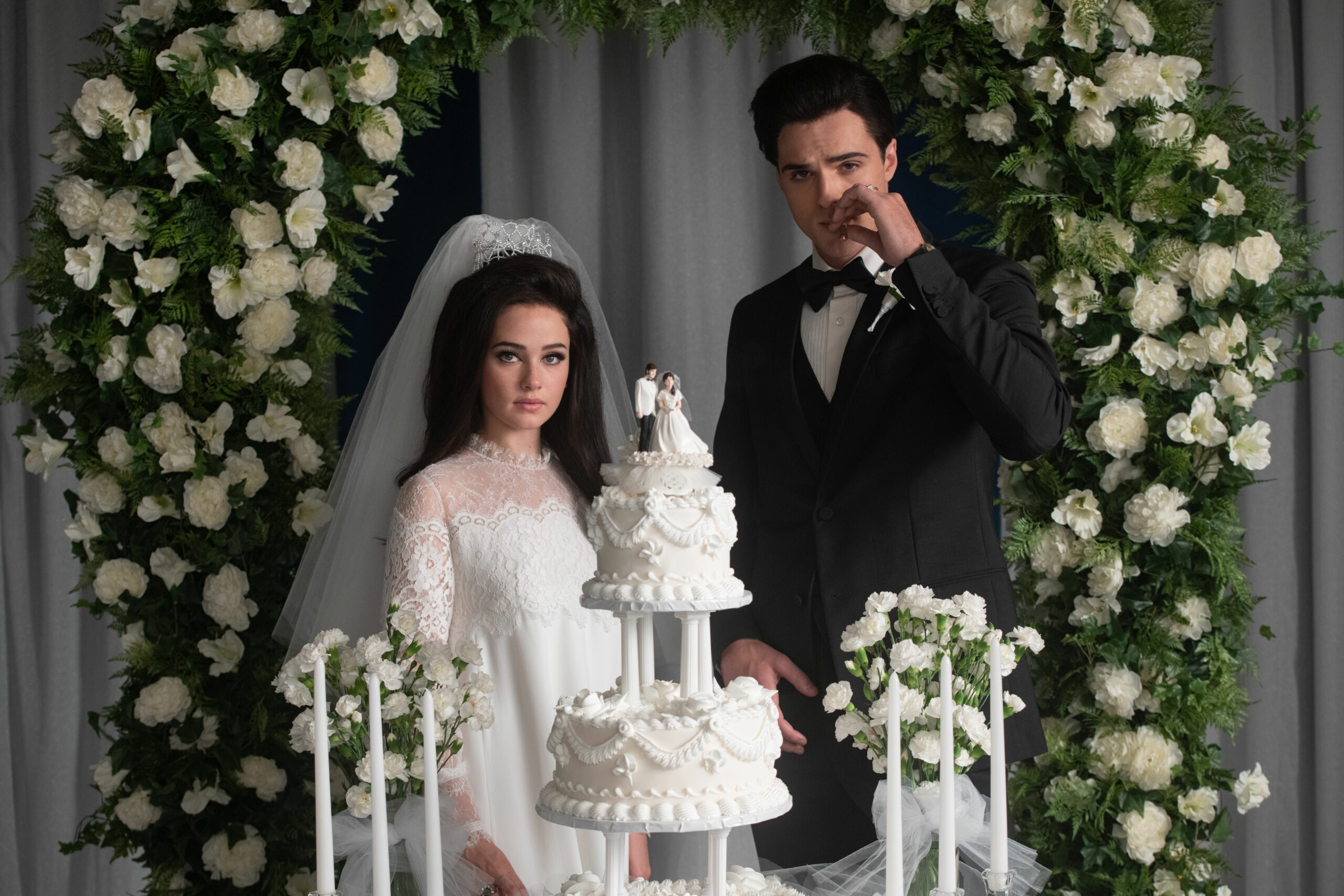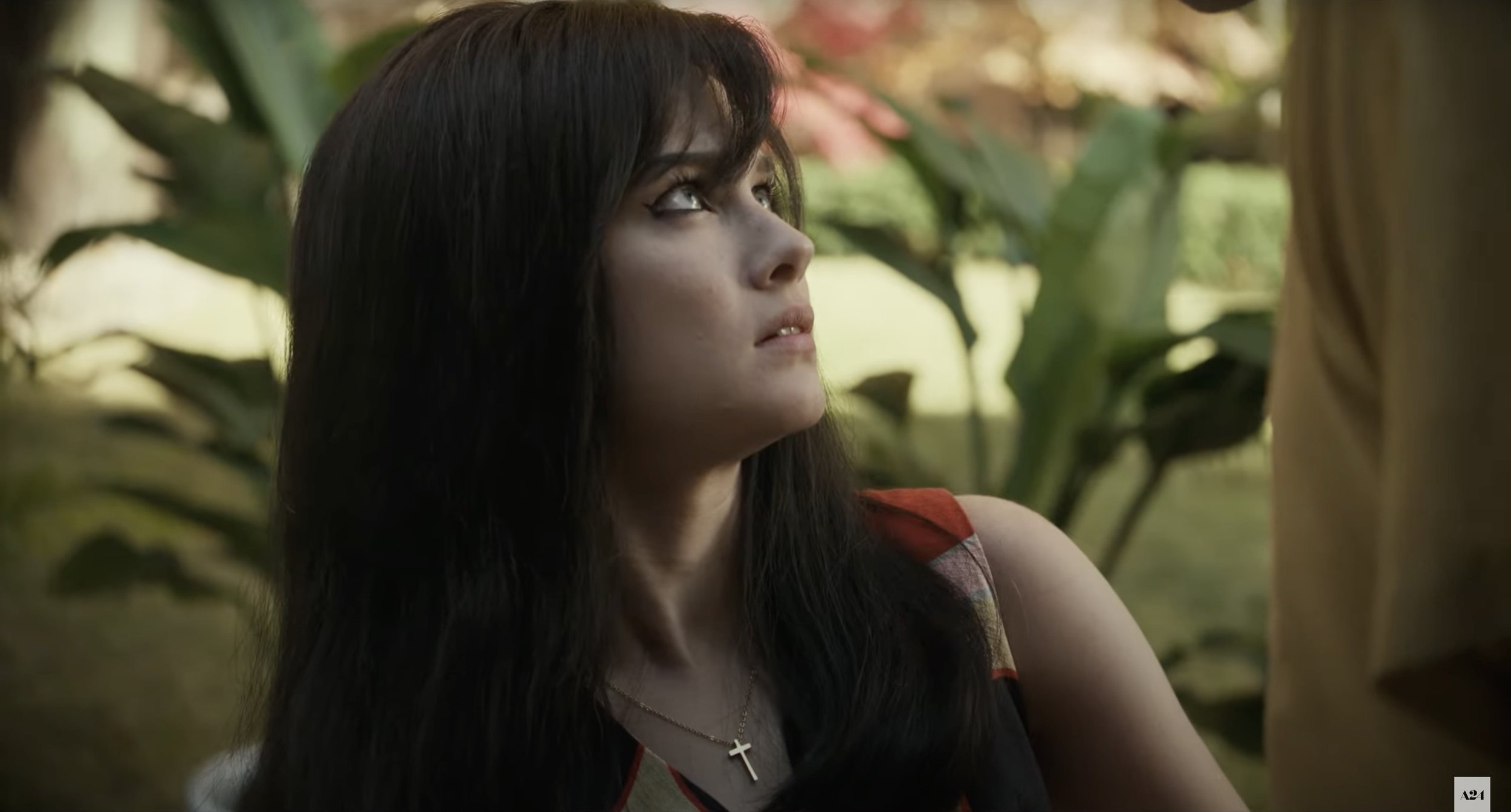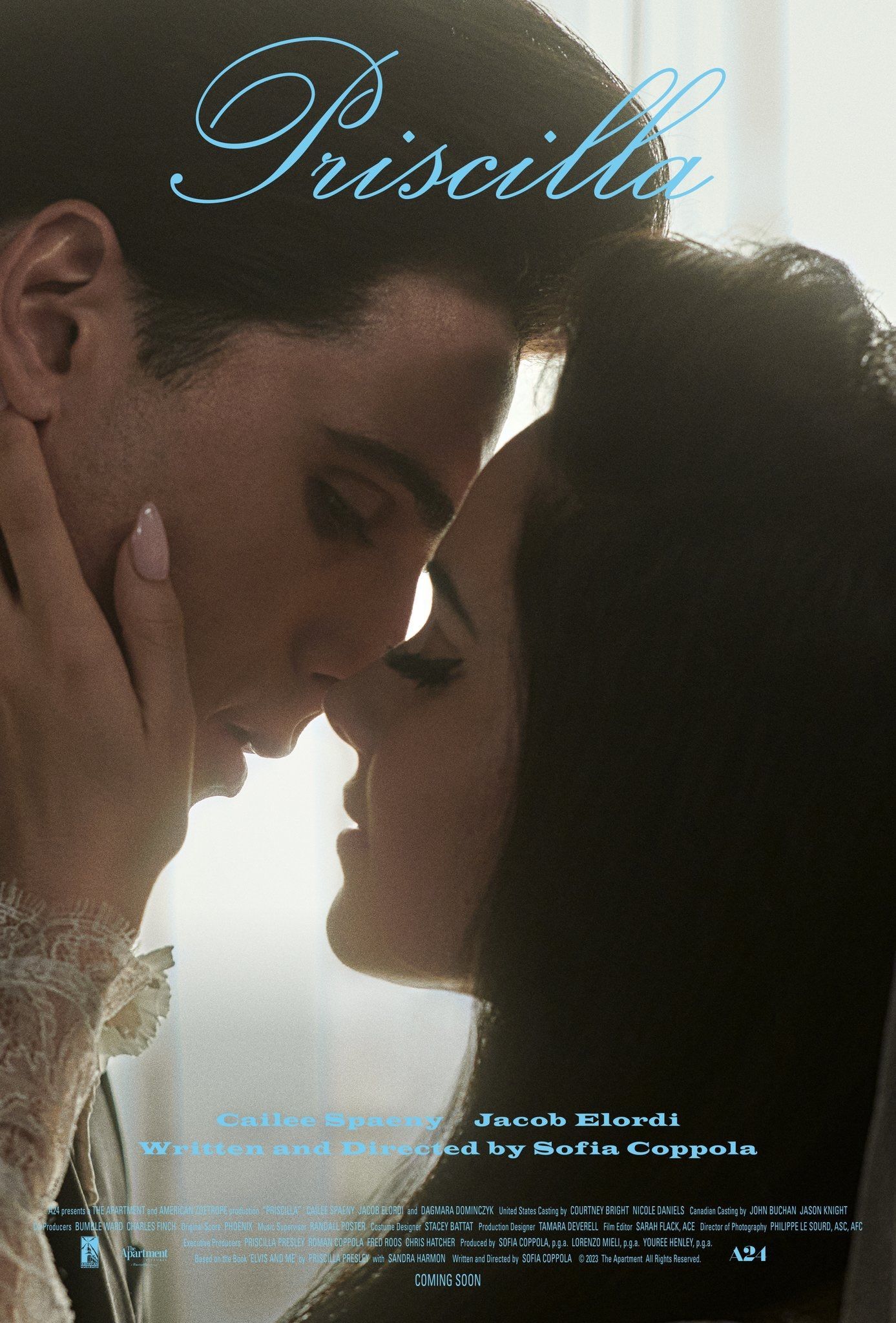When Sofia Coppola's latest film, 'Priscilla,' arrived, people everywhere started talking about its look. This movie, which tells the story of Priscilla Beaulieu and her very complicated romantic journey with Elvis Presley, really does have a distinct visual style. It's almost as if every frame just feels different, doesn't it? That visual quality makes you wonder about the choices made behind the camera.
The film, inspired by Priscilla's 1985 memoir, 'Elvis and Me,' gives us a close look at her life. Cailee Spaeny plays Priscilla, and Jacob Elordi takes on the role of Elvis. From the moment teenage Priscilla Beaulieu meets Elvis Presley, the film just pulls you into their world. The way it looks, the colors, the light – it all plays a big part in telling this very personal story.
So, a big question that many film lovers and casual viewers alike have been asking is, was 'Priscilla' shot on film? Or did they use digital cameras? This question gets at the heart of how the movie feels and what kind of experience Sofia Coppola wanted to create for us, really. Understanding the medium can actually help us appreciate the film even more, you know?
Table of Contents
- Priscilla Presley: A Glimpse into Her Life
- The Look of 'Priscilla': A Director's Vision
- Was 'Priscilla' Shot on Film? The Technical Details
- Why Film for 'Priscilla'? Storytelling Through Visuals
- The Cast and the Craft Behind the Scenes
- The Film's Reception and Its Visual Legacy
- Frequently Asked Questions About 'Priscilla'
Priscilla Presley: A Glimpse into Her Life
The film 'Priscilla' brings to life the story of a woman whose name, Priscilla, is an English female given name. It comes from the Latin 'Prisca,' which means 'ancient' or 'venerable.' Interestingly, there's even a theory that a biblical character named Priscilla might have written the Letter to the Hebrews. This movie, though, centers on Priscilla Beaulieu, who would become Priscilla Presley, and her very unique journey.
The biopic, which is inspired by Priscilla's 1985 memoir, 'Elvis and Me,' really shines a light on her experiences. While Elvis Presley is often called the King, in Sofia Coppola’s film, it’s Priscilla Presley who truly gets the royal treatment. The movie is, in some respects, her story, told from her point of view. It’s a pretty solid story, charting the beginnings of Priscilla and Elvis Presley’s relationship.
Here’s a quick look at some key details about Priscilla Ann Beaulieu Presley:
| Detail | Information |
|---|---|
| Full Name | Priscilla Ann Beaulieu Presley |
| Born | May 24, 1945 |
| Birthplace | Brooklyn, New York, U.S. |
| Known For | Actress, businesswoman, former wife of Elvis Presley |
| Memoir | 'Elvis and Me' (1985) |
| Key Relationship | Elvis Presley |
The Look of 'Priscilla': A Director's Vision
When you watch a Sofia Coppola film, you often notice a certain feeling, a particular visual signature. 'Priscilla' is no different. It's almost like she paints with light and color to tell her stories. The way the film looks is very much a part of its narrative, you know? It helps us understand Priscilla's world, her feelings, and the atmosphere around her.
Sofia Coppola's Signature Style
Sofia Coppola has, for a long time, been known for her distinctive visual approach. Her films often have a dreamy, somewhat melancholic quality. She uses soft lighting, beautiful pastel colors, and a focus on intimate moments. This style, actually, tends to be very effective at exploring themes of isolation, beauty, and the inner lives of women. With 'Priscilla,' her latest film, she brings that same thoughtful touch, and it really features a standout starring turn from Cailee Spaeny.
Her movies, like 'Lost in Translation' or 'Marie Antoinette,' often feel like a quiet observation. They draw you in with their aesthetic, making you feel what the characters feel, sometimes just through the visuals. This consistent style is part of what makes her work so recognizable, and people often look forward to seeing how she'll bring a new story to life visually, too it's almost.
Capturing a Bygone Era
The story of Priscilla and Elvis spans many years, from the late 1950s through the 1970s. This means the film had to transport us back in time, not just through costumes and sets, but through its entire visual presentation. The way the film looks helps to evoke the period, creating a sense of nostalgia, perhaps even a bit of a dreamlike quality. It's a bit like stepping into a memory, isn't it?
The choice of how to shoot the film was, therefore, very important for capturing the essence of these decades. The colors, the texture, the way light falls on faces and objects – all these elements work together to create an authentic feel. It's not just about showing the past; it's about making you feel like you are there, experiencing it, in a way.
Was 'Priscilla' Shot on Film? The Technical Details
Now, to the big question everyone's been asking: was 'Priscilla' shot on film? The answer, simply put, is yes. Sofia Coppola and her team chose to shoot 'Priscilla' on 35mm film. This decision is pretty significant, and it tells us a lot about the artistic intentions behind the movie, actually.
The Choice of Medium: Film vs. Digital
In today's filmmaking world, directors have a big choice to make: shoot on traditional film or use modern digital cameras. Each option has its own distinct qualities. Digital cameras offer incredible clarity, sharpness, and flexibility in post-production. They're often seen as more convenient and cost-effective, too, which is something to consider.
Film, on the other hand, provides a unique aesthetic. It has a particular grain structure, a different way of handling colors and light, and a certain depth that many filmmakers adore. It can feel more organic, more textured, and often brings a kind of warmth that's hard to replicate digitally. This choice isn't just technical; it's an artistic statement, you know?
What We Know About 'Priscilla's' Cinematography
So, as we mentioned, 'Priscilla' was indeed shot on 35mm film. This choice by Sofia Coppola and her cinematographer, Philippe Le Sourd, really shaped the film's visual identity. Le Sourd has worked with Coppola before, on 'The Beguiled,' which also had a very specific, beautiful look. Their collaboration often results in films that feel visually rich and emotionally resonant.
Using 35mm film means the movie has a natural grain, a subtle texture that digital often lacks. This grain gives the images a softness, a slightly imperfect quality that can feel very human and authentic. It's not just about nostalgia; it's about how the image itself feels to the eye. This decision was, arguably, central to the film's overall mood and tone.
The Aesthetic Impact of Film
The decision to use film for 'Priscilla' has a clear aesthetic impact. Film stock has a unique way of rendering colors, often with a richness and depth that can be quite lovely. It handles highlights and shadows differently, creating a more natural fall-off in light. This can make skin tones look incredibly lifelike and environments feel more immersive, too it's almost.
The grain itself adds a subtle, living quality to the image. It's not just a flat picture; it has a kind of movement within it. This can contribute to the dreamy, slightly ethereal quality that Coppola often seeks in her work. For a story that often feels like a memory or a personal reflection, this visual texture is very, very fitting, you know? It helps to evoke the feeling of a past time, rather than just showing it.
Why Film for 'Priscilla'? Storytelling Through Visuals
Beyond just looking pretty, the choice to shoot 'Priscilla' on film serves the story in profound ways. It's not just a technical decision; it's a storytelling tool. Sofia Coppola is a director who uses every element of filmmaking to enhance her narrative, and the visual medium is a big part of that, really.
Embodying Priscilla's Perspective
The film focuses on Priscilla's point of view, showing her experiences from her young teenage years right through her marriage to Elvis. The visual style, therefore, needed to reflect her inner world. The softness and slight dreaminess of film can help convey the feeling of a young woman's hopes, her isolation at Graceland, and her evolving understanding of her life. It's a bit like looking through her eyes, or perhaps even through her memories.
The film's look helps to create a sense of intimacy and vulnerability, allowing us to connect with Priscilla's emotional journey. It's not a harsh, stark portrayal; it's a gentle, often poignant one. This visual approach supports the human-centric narrative, making her story feel very personal and relatable, even if her circumstances were extraordinary, you know?
Nostalgia and Authenticity
For a story set in the past, film naturally lends itself to creating a sense of nostalgia. The look of 35mm film can instantly transport viewers to a different era, evoking the feeling of classic movies from the time period depicted. This isn't just a surface-level trick; it helps to root the story in its historical context, making it feel more authentic to the period it represents.
The film's aesthetic also contributes to the feeling of authenticity in capturing the private moments of Priscilla's life. The subtle imperfections of film can make the scenes feel more real, less polished, and more like genuine memories. It helps to blur the line between a meticulously recreated past and a deeply felt personal history, so it's almost. This choice, in some respects, makes the story feel more lived-in.
The Cast and the Craft Behind the Scenes
Of course, a film's visual style is only one part of its success. The performances, the script, and the entire team working behind the scenes are just as important. 'Priscilla' benefits from a dedicated cast and a director known for her careful craft, you know?
Bringing Priscilla and Elvis to Life
Cailee Spaeny's portrayal of Priscilla Beaulieu has been widely praised, bringing depth and nuance to the character. She truly embodies Priscilla's journey from a shy teenager to a young woman finding her own voice. Jacob Elordi, too, delivers a compelling performance as Elvis Presley, capturing his charisma and his complexities. Their performances are, in a way, central to the film's emotional impact.
The chemistry between Spaeny and Elordi is a big part of what makes their complicated relationship feel believable. Sofia Coppola's direction allows these actors to really explore their characters, creating a compelling dynamic that keeps you invested in the story. It's pretty clear that a lot of thought went into casting just the right people for these iconic roles.
Coppola's Collaborative Process
Sofia Coppola's films are often the result of strong collaborations with her team. From the cinematographer to the production designer, every person contributes to the overall vision. Her latest film, 'Priscilla,' is a great example of this, where every detail, from the costumes to the set dressing, works to build the world of the film. This collaborative spirit is, arguably, what makes her movies feel so cohesive.
The attention to detail in recreating the various periods of Priscilla's life, from her teenage years in Germany to her time at Graceland, is remarkable. This meticulous craft, combined with the choice of film as a medium, helps to create a truly immersive experience for the viewer. It shows that filmmaking is very much a team effort, with everyone playing a part in bringing the director's vision to the screen.
The Film's Reception and Its Visual Legacy
'Priscilla' has certainly made an impression since its premiere. Its unique visual style and compelling storytelling have sparked lots of conversations among critics and audiences alike. The film's journey began on a pretty big stage, and it has continued to resonate with people, too it's almost.
Festival Premiere and Audience Reaction
'Priscilla' premiered at the 80th Venice International Film Festival, where it received a lot of attention. Festival premieres are often a first look for the world, and they set the tone for how a film will be received. The initial reactions to 'Priscilla' were largely positive, with many praising Cailee Spaeny's performance and Sofia Coppola's direction. The film's visual beauty was also a frequent topic of discussion, as you might expect.
The buzz from Venice helped build anticipation for the film's wider release. Audiences have since had the chance to see the film and form their own opinions, but the discussion around its aesthetic and its portrayal of Priscilla's story has continued. It's clear that the film leaves a lasting impression, partly because of how it looks and feels, you know?
The Enduring Appeal of Film Aesthetics
The fact that 'Priscilla' was shot on film, and that this choice is a topic of conversation, speaks to the enduring appeal of film aesthetics. Even in an age dominated by digital technology, many filmmakers and audiences still appreciate the unique qualities that film brings to the screen. There's a certain timelessness to the film look, a quality that can make a story feel classic and enduring.
Sofia Coppola's continued use of film for her projects, including 'Priscilla,' reinforces the idea that the medium is a powerful artistic tool. It's not just about capturing an image; it's about crafting an experience. The visual legacy of 'Priscilla' will likely be remembered for its beauty and for how it used film to tell a deeply personal and evocative story. Learn more about filmmaking techniques on our site, and for more on the director's work, you can link to this page about Sofia Coppola's films.
Frequently Asked Questions About 'Priscilla'
Here are some common questions people often ask about the film 'Priscilla':
Was Priscilla filmed in black and white?
No, 'Priscilla' was not filmed in black and white. It features rich, natural colors that help to convey the mood and atmosphere of the different periods depicted in the story. The film's color palette is quite deliberate, adding to its dreamy and nostalgic feel.
What aspect ratio is Priscilla?
'Priscilla' uses an aspect ratio that contributes to its intimate and focused feel. While specific technical details might vary slightly, Sofia Coppola often favors ratios that draw the viewer into the characters' personal spaces, making the experience feel more contained and personal.
Did Sofia Coppola use film for all her movies?
Sofia Coppola has a strong preference for shooting on film, and she has used it for many of her notable works, including 'Priscilla.' While she might occasionally work with digital for specific scenes or projects, her signature aesthetic is often achieved through the unique qualities of film stock.



